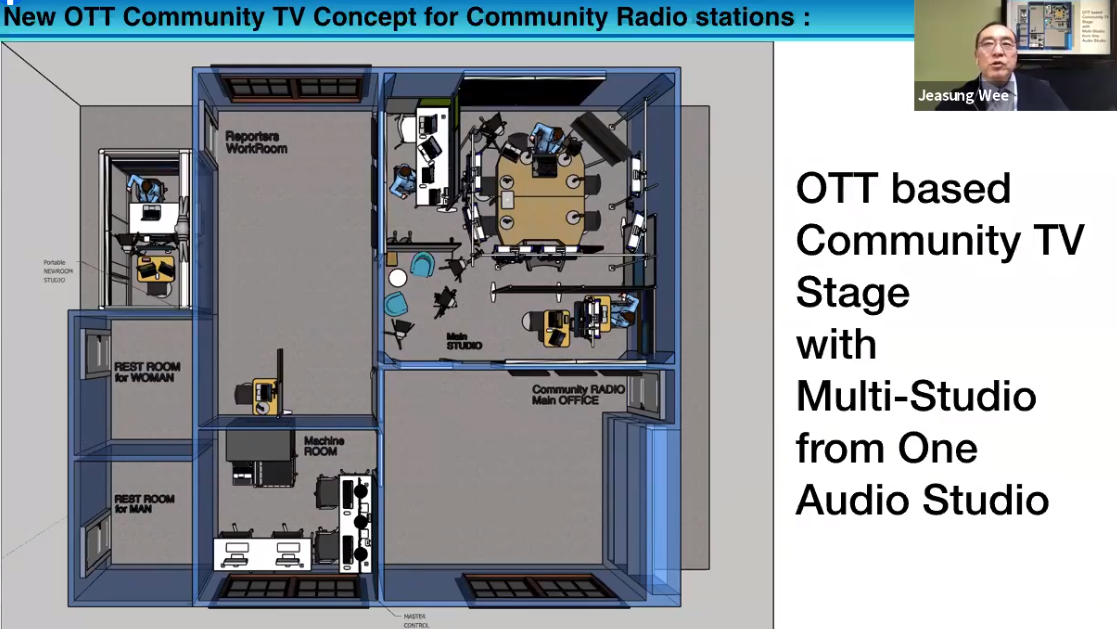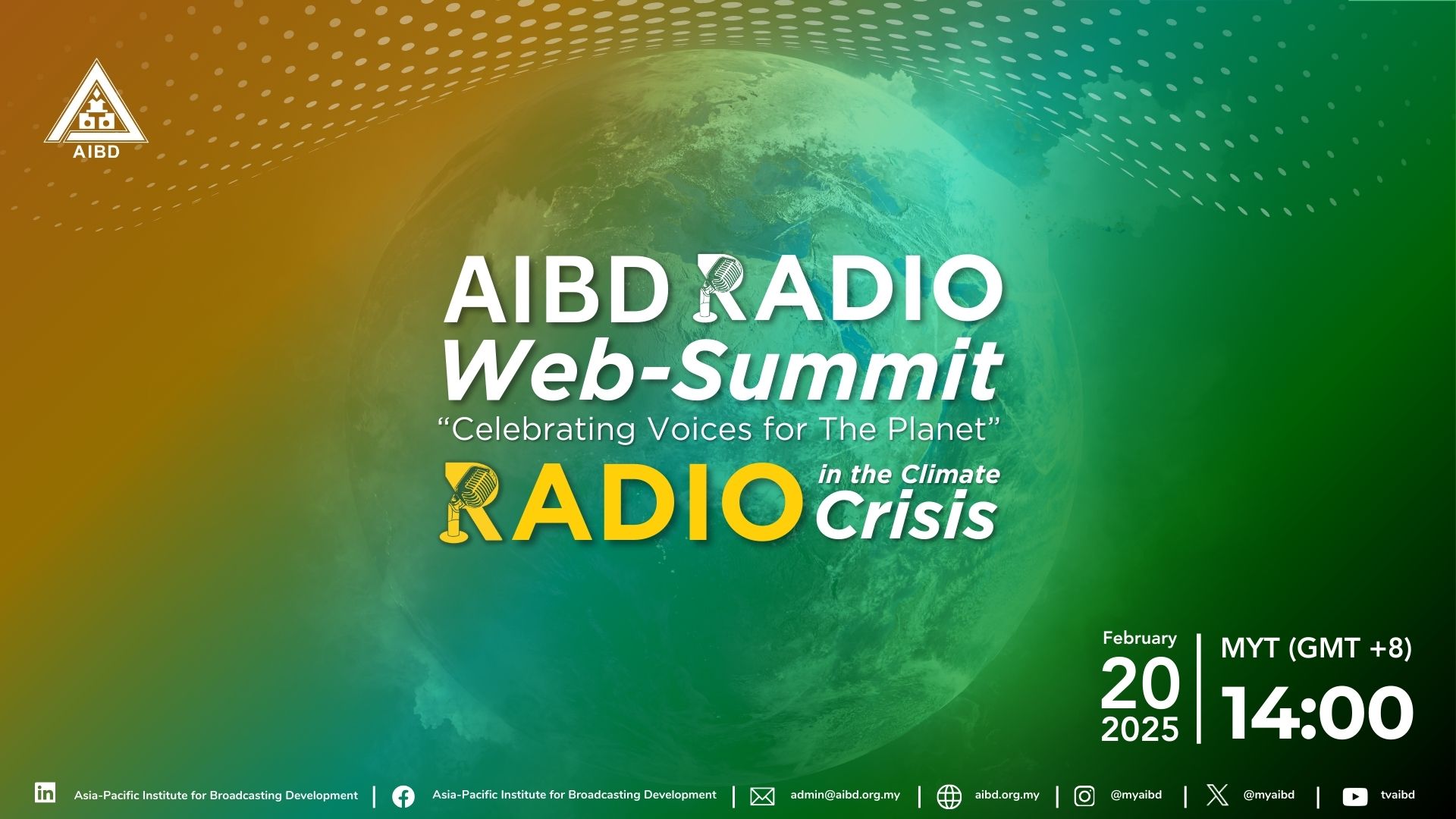
AIBD Regional Webinar on Trends in OTT for Community Media
AIBD organised a regional webinar on the latest trends in OTT (Over the top) technology for the community media. Over 150 media practitioners from 19 countries attended the event.
In her opening remarks, the Director of AIBD, Ms Philomena Gnanapragasam, said ‘In the age of new media, Community radio has now powerful support to enhance its impact by telling its stories visually with the power of citizen journalism, livestreaming, podcasting and blogging. She also mentioned that, Community Radio has always proved to be an effective medium for the development of the unprivileged communities, it is high time that this industry should look into the future to remain relevant and to globalize their local stories to create a powerful impact.
Event’s main consultant, Mr Jeasung Wee from South Korea delivered an hour-long lecture on the latest applications to aide community media with OTT technology. Mr Wee highlighted that by using the potential of new media community radio and enhance its scope by becoming community media, which can have visual presence as well. His lecture was divided into three portions:
- The role of community radio in the age of new media
- Latest broadcasting technology for the community media
- System design for community media

Mr Wee revealed to the audience that with the evolution in technology, many solutions are now quite cheap. Any community organisation can now manage a video studio within the budget of USD 15,000. He also talked about the UNESCO’s model of community media.
After the session, the event was followed by an hour-long moderated discussion by the renowned regional community media practitioners. The session was moderated by Dr Amal Punchihewa, Broadcasting Consultant from New Zealand. Dr Sreedher Ramamurthy from India, Mr Balkrishna Pokhrel from Nepal, Mr Bazlur Rahman from Bangladesh, Mr Rob Hopkins from Canada, took part in the discussion.
Dr Sreedher Ramamurthy, a famous name in the South Asian fraternity of community media, shared his views on the subject that apart from OTT applications, strategies should be devised to manage efficient intranet systems for the local communities. He also emphasised on the importance of distance learning by stating that community radio aided with visual medium has the potential to replace the mainstream media as it is more relatable to the communities.
Mr Bazlur Rahman, CEO of BNNRC Bangladesh, mentioned that OTT has now become a survival strategy for the community radio. Since the listenership of community radio is losing while 5G is making its way, it is important for the broadcasters to integrate both mediums to create a larger impact. It is high time to rethink the strategies to rescale, upscale and descale the community radio by using the OTT platform.
Mr Rob Hopkins, Community Radio Broadcaster from Canada, mentioned that relevance is the key to the success of community media. In the age of social media, where content is generated at a very high rate, it is important to be relevant, reliable and relatable. He mentioned that effective local radio stations can play a very significant role not only to promote local culture but also to combat disinformation related to the local events. However, he mentioned that because of high penetration of the new media, the major threat would be the loss of intellectual property, regulators should work on this aspect to control such violations and community media should devise such their new media strategy which is more controllable.
Mr Balkrishna Pokhrel, President, ACORAB, Nepal mentioned the role of community radio in the social development. He mentioned that in a recent survey, for over 70 percent of population in Nepal, the major source of information is radio, but 50 percent people have radio sets, it means that listenership is gradually growing through internet streaming. He mentioned that since Nepal doesn’t have any policy on OTT, its high time to voice out the importance of having one to avoid any near future challenge for the community media.

For closing remarks, Ms Philomena mentioned that AIBD has always recognised the role of community radio and more of such programme will be organised to uplift the community media. She also mentioned that by joining hands with key regional stakeholders, AIBD will create a platform for knowledge sharing for this medium.
The Session was also live streamed on Facebook for those who could not register on time. In some organisations, it was projected on a large screen so that more people could follow the Session.






